Walking on a treadmill can be an effective strategy for weight loss. It offers the convenience of exercise regardless of weather conditions.
When determining how fast to walk for weight loss, it’s important to understand that calorie burn is influenced by individual factors such as weight, walking speed, and incline level.
To achieve weight loss, creating a calorie deficit is key. The aim is to expend more calories through activity than you consume through food.
The intensity of treadmill walking is crucial. Walking at a brisk pace is generally recommended to effectively burn calories and contribute to weight loss.
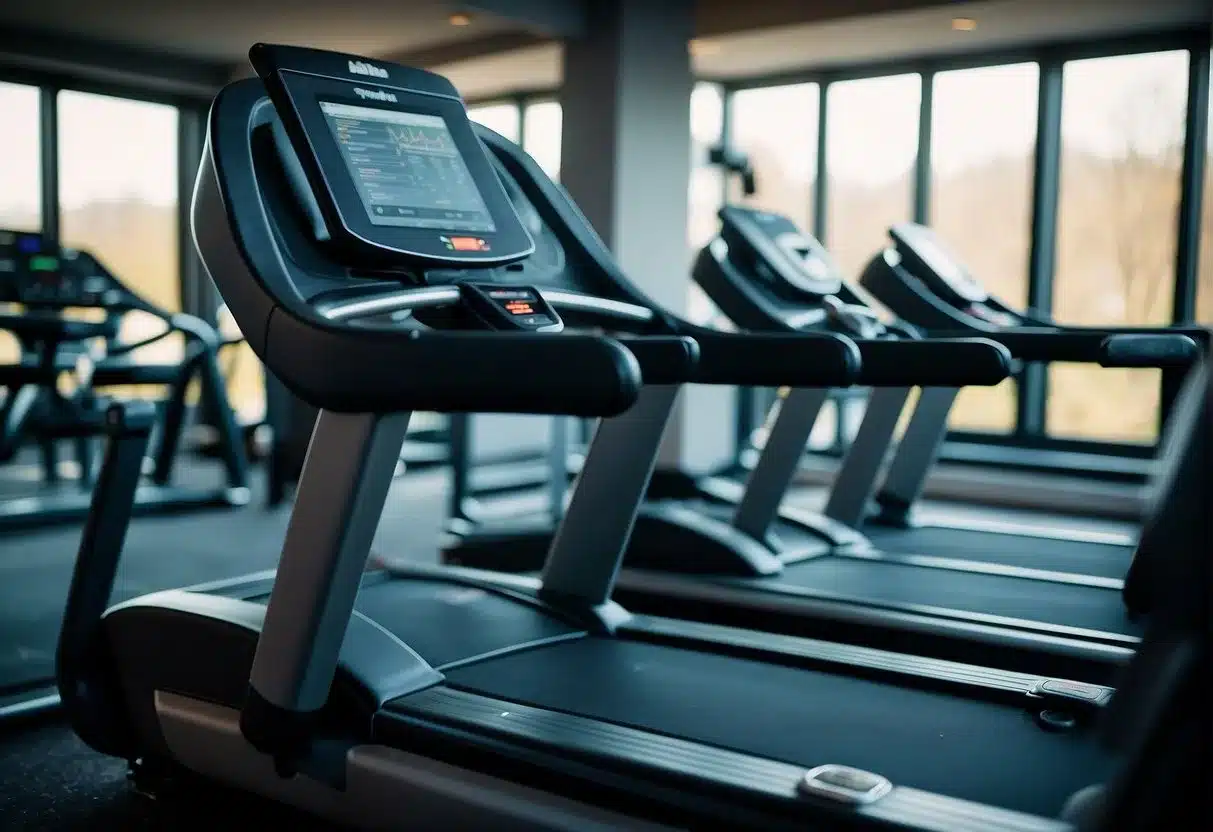
Consistency in workouts, along with a balanced diet, play a vital role in losing weight through treadmill walking.
The optimal walking speed varies for each person, but a moderately intense pace where you can talk but not sing is often suggested as a guideline.
Additionally, incorporating intervals with varying speeds and inclines can enhance the calorie-burning effects of your workout, helping accelerate weight loss.
Monitoring progress and adjusting workouts accordingly is essential for continued improvement and to avoid weight loss plateaus.
Understanding the Basics of Treadmill Walking for Weight Loss

Treadmill walking is a controlled aerobic exercise that can effectively assist in weight loss and fitness goals. The correct speed and duration on the treadmill can help optimize calorie burn.
Benefits of Treadmill Walking
Treadmill walking is a low-impact exercise that improves cardiovascular health while also aiding in weight management.
It allows for the adjustment of speed and incline to match fitness levels and goals, leading to efficient calorie expenditure. The convenience of a treadmill makes it simple to maintain a consistent walking routine, regardless of weather conditions.
How Walking Affects Weight Loss
When it comes to weight loss, walking on a treadmill helps increase the heart rate to a fat-burning zone, encouraging the body to use stored fat as energy.
Regular walking routines can boost metabolism and lead to a caloric deficit, which is essential for shedding pounds.
For those interested in specifics, a brisk walk can burn approximately 300 calories per hour for an individual weighing around 155 pounds.
Determining the Right Speed for You
Finding the right speed on a treadmill is subjective and directly correlates with an individual’s current fitness level and objectives.
A guideline for a moderate intensity is walking at a speed where one is able to talk but would find it difficult to sing.
Typically, speeds ranging from 3.5 to 4 mph can optimize calorie burn, while coupling this with an increased incline can significantly impact weight loss efforts. Adjustments should be made based on personal comfort and goals, always keeping safety in mind.
Optimizing Treadmill Workouts

For effective weight loss, one must optimize their treadmill workouts by incorporating variety and challenging their cardiovascular system.
Incorporating Intervals
Intervals, the alternation of high and low intensity, can significantly increase calorie burn.
For instance, someone might walk briskly for two minutes, then jog or run for one minute. This method not only improves endurance but also maintains a higher heart rate, leading to more calories burned.
- High intensity: 1 minute (e.g., 4.0 mph at a 4% incline)
- Low intensity: 2 minutes (e.g., 2.5 mph at a 1% incline)
Repeat for a set duration.
Balancing Intensity and Duration
The balance between how hard one works (intensity) and for how long (duration) is key to a successful weight loss program.
A moderate-intensity walk for 60 minutes can burn a substantial number of calories, but increasing the intensity with periodic sprints can accelerate results.
For a 155-pound person, walking at a brisk pace of 3.5 mph for one hour can burn approximately 267 calories.
The Role of Incline
Incline is a powerful tool for enhancing workout intensity without increasing speed, which is beneficial for those with joint concerns.
A steady walk at a higher incline will strengthen leg muscles and exponentially increase calorie expenditure.
For example, walking at 2.5 mph with an incline of 10% for a minute, followed by a flat walk, can make the workout significantly more challenging.
Walking Pace and Calorie Burn
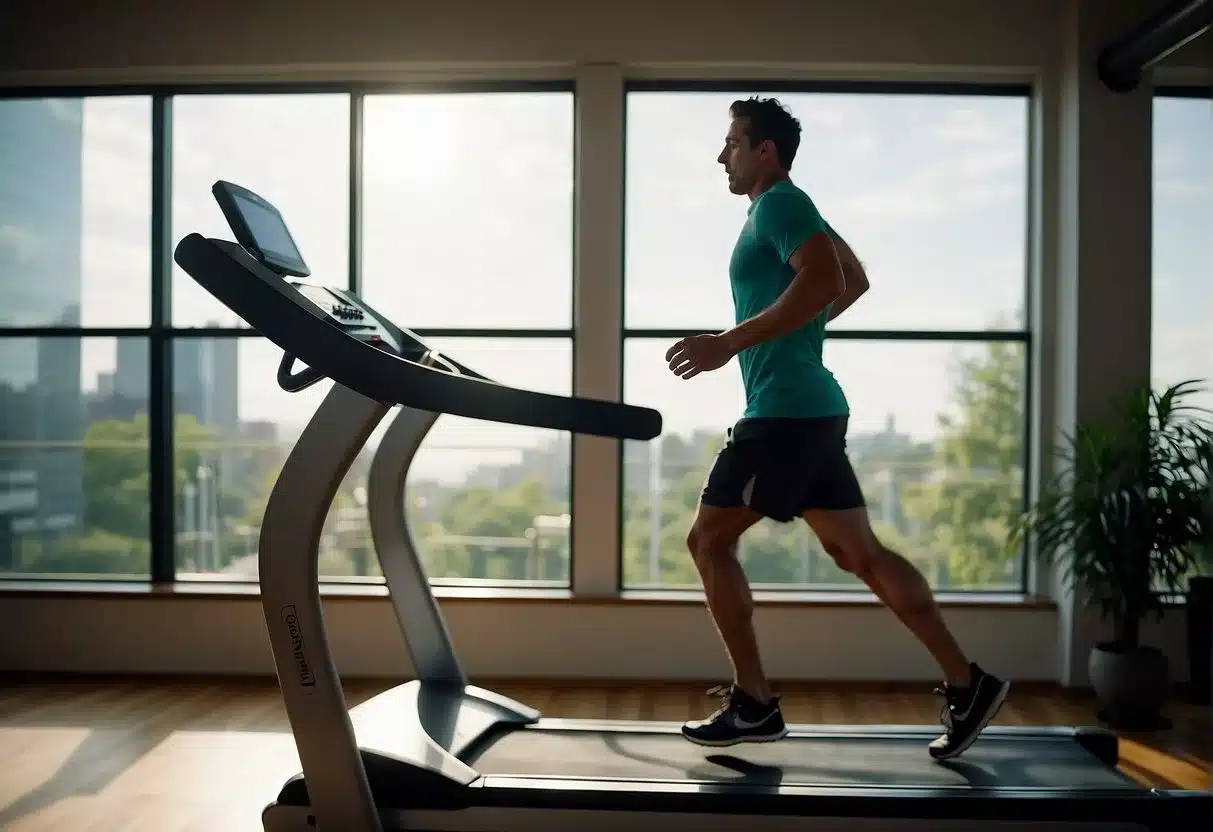
The number of calories burned during treadmill walking is closely tied to the pace and speed of the walk. A higher pace leads to greater calorie burn, which can be optimized by understanding and adjusting the factors involved.
Understanding Pace
Walking pace is commonly measured in minutes per mile or miles per hour (mph).
A moderate pace is generally between 3 to 4 mph, while a brisk pace exceeds 4 mph.
The actual calorie expenditure during a treadmill walk is influenced by the pace. For example, a person weighing 154 pounds may burn approximately 280 calories walking at a moderate pace of 3.5 mph for an hour, and 460 calories at a more vigorous pace of 4.5 mph.
Maximizing Calorie Burn
To maximize calorie burn on a treadmill, one should maintain a pace that is challenging but sustainable.
Increased speed equates to more calories expended. Adding intervals of increased incline or speed can further boost calorie burn. Consistency in maintaining a brisk pace may result in better weight loss outcomes.
Measuring Workout Effectiveness
Measuring the effectiveness of a treadmill workout can be done by tracking the walking speed and the duration of the walk.
Using a treadmill calculator can help quantify the specific calories burned based on an individual’s weight, the time spent walking, and the treadmill speed and incline. This assists in creating tailored workout plans that align with weight loss goals.
Program Design for Weight Loss
Creating a well-structured treadmill program is essential for those aiming to achieve weight loss. The right balance of workout intensity and consistency is key for individuals to progress based on their fitness levels, whether they are beginners or more advanced in their exercise journey.
Creating a Personalized Treadmill Plan
One’s fitness level should guide the pace and duration of treadmill workouts for fat loss.
For beginners, starting with a brisk walk at a pace between 3.0 to 4.0 mph can be effective. A typical starting workout may last for 20-30 minutes, gradually increasing time or speed as endurance and fitness level improve. This approach sidesteps overwhelming the body and fosters sustainable progress.
Progress and Plateaus
Monitoring progress is crucial in a treadmill weight loss program.
Users should consider varying their workout intensity to prevent plateaus, such as introducing intervals with higher speeds or an increased incline.
Gradual adaptations, like lengthening the duration of high-intensity periods, will encourage continued improvement in both fitness and weight loss efforts.
For instance:
- Week 1-2: Walk at 3.5 mph for 30 minutes, flat incline
- Week 3-4: Walk at 3.5 mph with a 2% incline for 30 minutes
- Week 5-6: Perform 1-minute intervals of running at 5.0 mph every 5 minutes within a 30-minute workout
Importance of Consistency
Consistency in the context of a weight loss regimen cannot be overstated.
Scheduling regular treadmill sessions, at least 3 to 4 times a week, ensures that a person is consistently burning calories which is essential for fat loss. The consistency of exercise, along with dietary mindfulness, form the linchpin of any successful weight loss strategy.
Tracking and Adjusting Your Workouts

When engaging in treadmill walking for weight loss, monitoring progress and tailoring the exercise regimen are crucial. One should use tools to track their activities and make adjustments based on their unique fitness level and goals.
Using Fitness Trackers
Fitness trackers and heart rate monitors are invaluable for one tracking their exercise intensity and duration.
These devices provide insights on pace, heart rate, and calories burned, allowing for a precise understanding of each workout’s effectiveness. For instance, one can ensure they’re exercising in their target heart rate zone for optimal fat burning.
Setting Realistic Goals
It is essential to set realistic goals that reflect one’s lifestyle, fitness level, and genetics. Goals should be specific, measurable, attainable, relevant, and time-bound (SMART).
For example, aiming to reduce the workout pace time from 20 minutes to 19 minutes per mile over a month is a clear and attainable objective.
Adapting Workouts to Your Fitness Level
Individuals must adapt their workouts to their evolving fitness routine.
Beginners might start with a moderate pace and zero incline, whereas more experienced walkers can increase the treadmill incline or pace for added challenge.
Tracking progress over time with a fitness tracker will signal when it’s appropriate to intensify the workout, ensuring continual improvement and adaptation to one’s fitness level.
Exercise Physiology and Body Mechanics

In the context of weight loss through treadmill walking, it is essential to understand how the body’s physiology and mechanics are engaged.
This includes the interaction of muscle groups during the exercise, the impact on heart rate and cardiovascular health, as well as the importance of proper walking posture and form for optimal results.
Muscle Groups Utilized During Treadmill Walking
Walking on a treadmill activates several muscle groups in the lower body. These include the glutes, quadriceps, hamstrings, calves, and the core muscles which contribute to stability and balance.
The glutes are especially engaged when walking at an incline, which can lead to enhanced muscle toning and strength.
Heart Rate and Cardiovascular Effects
The intensity of treadmill walking is often measured by heart rate, which is an indicator of cardiovascular effort.
Maintaining a brisk pace can result in a heart rate that is within the cardio training zone, contributing to improved cardiac health and stamina.
For weight loss, sustaining a heart rate in this desired range maximizes calorie burn and fat oxidation.
Improving Walking Posture and Form
Good posture during treadmill walking is critical for preventing injury and ensuring that the exercise targets the intended muscle groups effectively.
Proper form involves maintaining a neutral spine, keeping the head up, and engaging the core muscles.
A walking posture that reduces strain on the joints and maximizes muscle engagement can improve workout efficiency and effectiveness.
Lifestyle Considerations for Effective Weight Loss
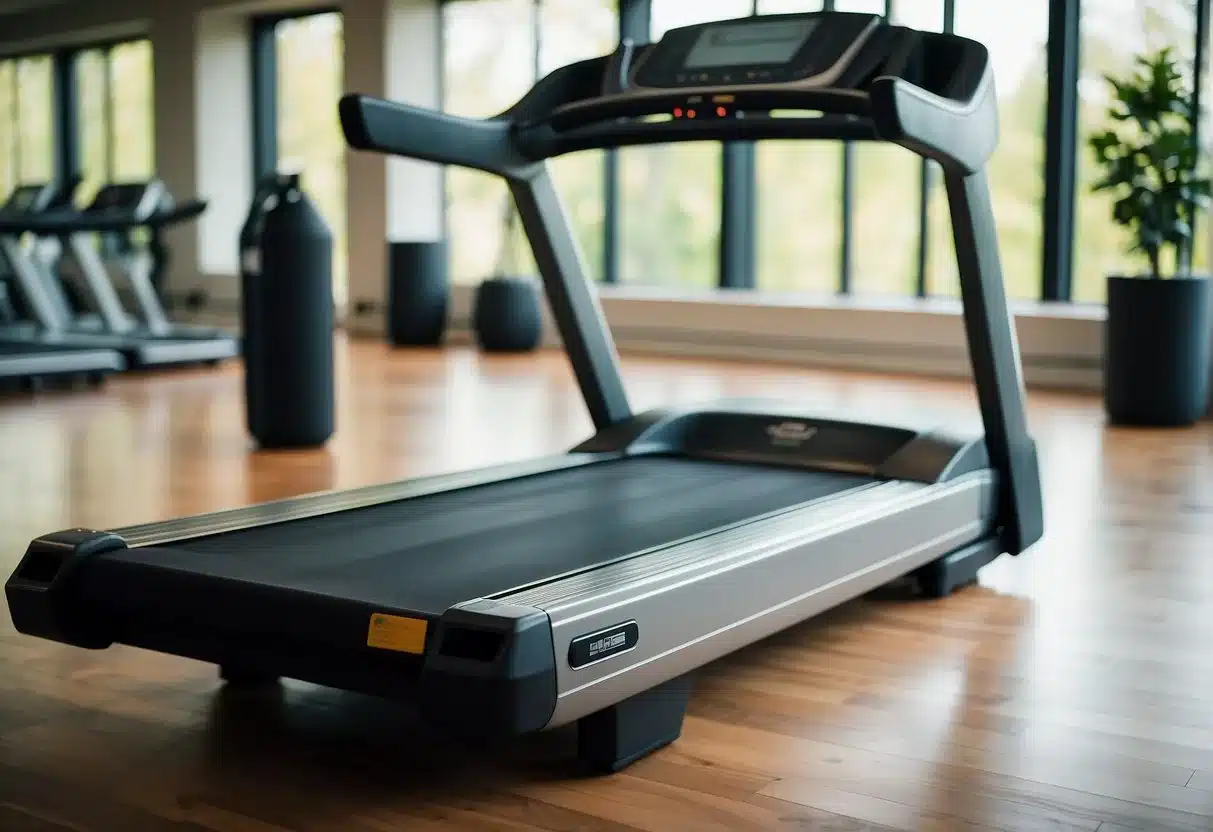
Effective weight loss is not just about how fast one walks on a treadmill; it encompasses a holistic approach to lifestyle, including mindful eating, adequate rest, and a balanced routine. Here’s how to integrate these elements effectively.
Nutrition and Diet
A calorie deficit is essential for weight loss, meaning one must consume fewer calories than the body burns.
Integrating nutrition-rich foods that are lower in calories yet filling can help achieve this balance.
For example, incorporating a mix of lean proteins, whole grains, and plenty of vegetables can support a healthy weight without compromising on nutrition or energy levels.
- Proteins: Chicken, tofu, legumes
- Whole Grains: Brown rice, quinoa, oatmeal
- Vegetables: Leafy greens, bell peppers, broccoli
Incorporating Rest and Recovery
Recovery, including rest days, is critical in any fitness lifestyle to prevent overtraining and allow muscles to repair.
Walking for weight loss should be complemented with adequate sleep and rest to help the body rejuvenate.
- Sleep: Aim for 7-9 hours per night
- Rest Days: At least one per week, or more based on one’s fitness level and response to exercise
Exercise as Part of a Balanced Lifestyle
A fitness lifestyle should be well-rounded, with walking being one part of a varied exercise regime.
Balancing different types of exercise not only prevents boredom but also promotes overall fitness and reduces the risk of injury.
- Cardiovascular Exercise: Walking, cycling, swimming
- Strength Training: Weight lifting, resistance bands, bodyweight exercises
- Flexibility: Yoga, stretching routines
Safety and Maintenance
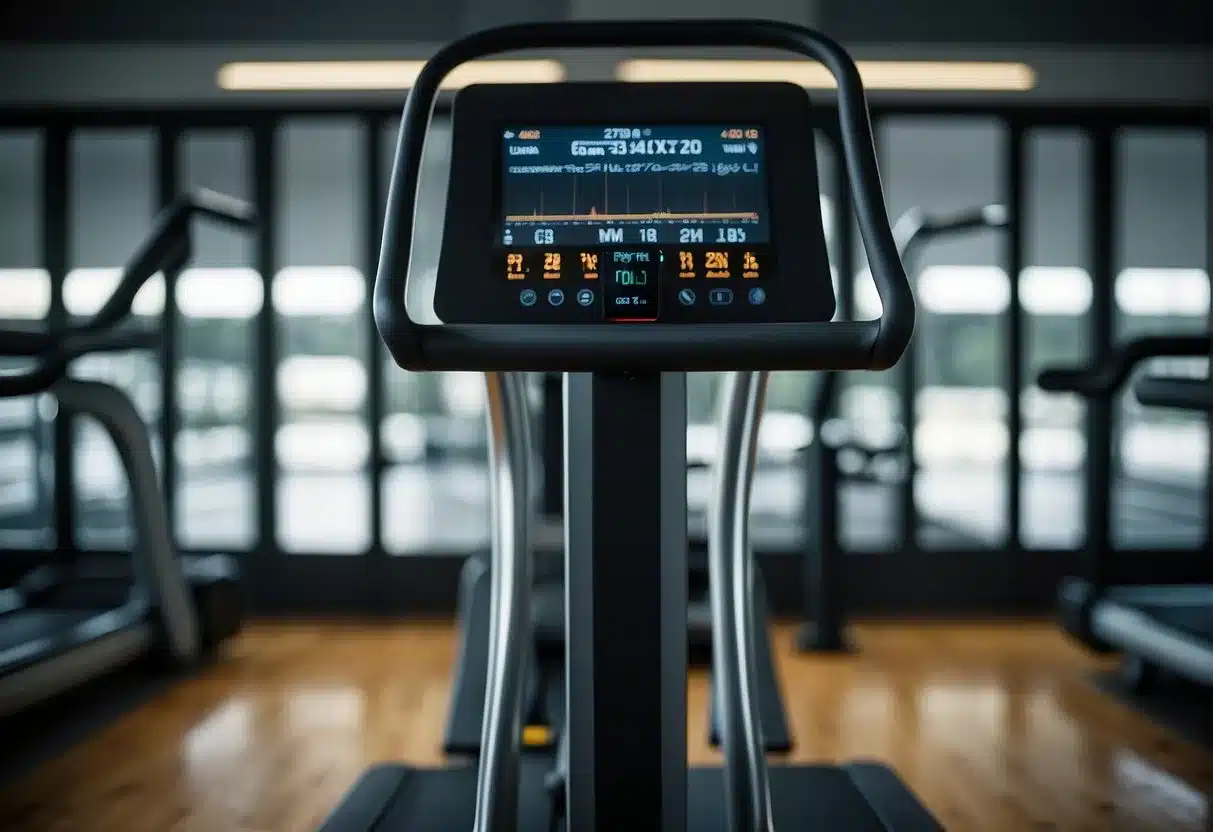
When focusing on weight loss through treadmill walking, safety and injury prevention are critical. Proper maintenance of the treadmill is equally important to ensure its longevity and functionality, while warm-up and cool-down routines are necessary for a well-rounded, injury-free fitness regime.
Preventing Injuries
Prevention of treadmill-related injuries starts with understanding the proper use of the equipment.
Users should ensure they wear shoes with adequate support and cushioning.
It’s also important to practice good posture during walks—shoulders back, head up, and eyes forward. This minimizes strain on the back and neck.
Starting at a slow pace then gradually increasing to a brisk walk allows the muscles to acclimate, reducing the risk of pulling or overexerting muscles.
Maintaining Your Treadmill
Regular maintenance of a treadmill extends its life and helps in averting accidents. Here are some key tips:
- Monthly: Vacuum around the deck and belt to remove any dust and debris.
- Bi-annually: Tighten any loose bolts and screws, especially if the machine wobbles or if any unusual noises occur during use.
- Consult the manual: Lubricate the belt as recommended by the treadmill manufacturer.
This routine should ensure that the treadmill remains reliable and safe.
Warm-Up and Cool-Down Routines
Incorporating warm-up and cool-down phases in treadmill workouts is essential for safety and performance.
A warm-up might consist of 5-10 minutes of slow walking or light stretching to prepare the muscles. This helps improve breathing and oxygen flow to the exercising muscles.
A cool-down should mirror the warm-up, gradually reducing the pace to a complete stop and ending with stretches to alleviate muscle stiffness.
These practices not only prevent injuries but also aid in better recovery post-exercise.
Research and Current Trends in Treadmill Walking

Treadmill walking is a popular exercise for fat loss, with recent research shedding light on the most efficient practices. Current trends point towards leveraging technology and innovative features to enhance the walking experience.
Latest Studies on Walking and Fat Loss
Researchers are consistently exploring how treadmill walking impacts fat loss.
A study published in Nature highlights the variability of human walking, suggesting that adjusting speeds, step lengths, and frequencies can influence calorie burn.
Another key finding from fitness professionals, like those at BarBend, is that incorporating intervals with variations in incline and speed can significantly boost metabolic rate and, hence, fat loss.
Innovative Treadmill Features
Treadmill manufacturers are continuously implementing features that support weight loss trends.
Some treadmills now include built-in workout programs specifically designed to maximize fat loss.
For example, workouts that alter incline levels and speed intervals engage different muscle groups and increase calorie expenditure, as suggested by insights from Verywell Fit.
Future of Treadmill Exercises
The treadmill sector is likely to keep evolving, with a focus on personalization and interactivity.
Manufacturers are working on ways to simulate outdoor walking conditions and integrate social components to keep users motivated.
With the aid of artificial intelligence, it’s expected that treadmills will automatically adjust to the user’s fitness level and goals, making each walking session as efficient as possible for fat loss.
Frequently Asked Questions
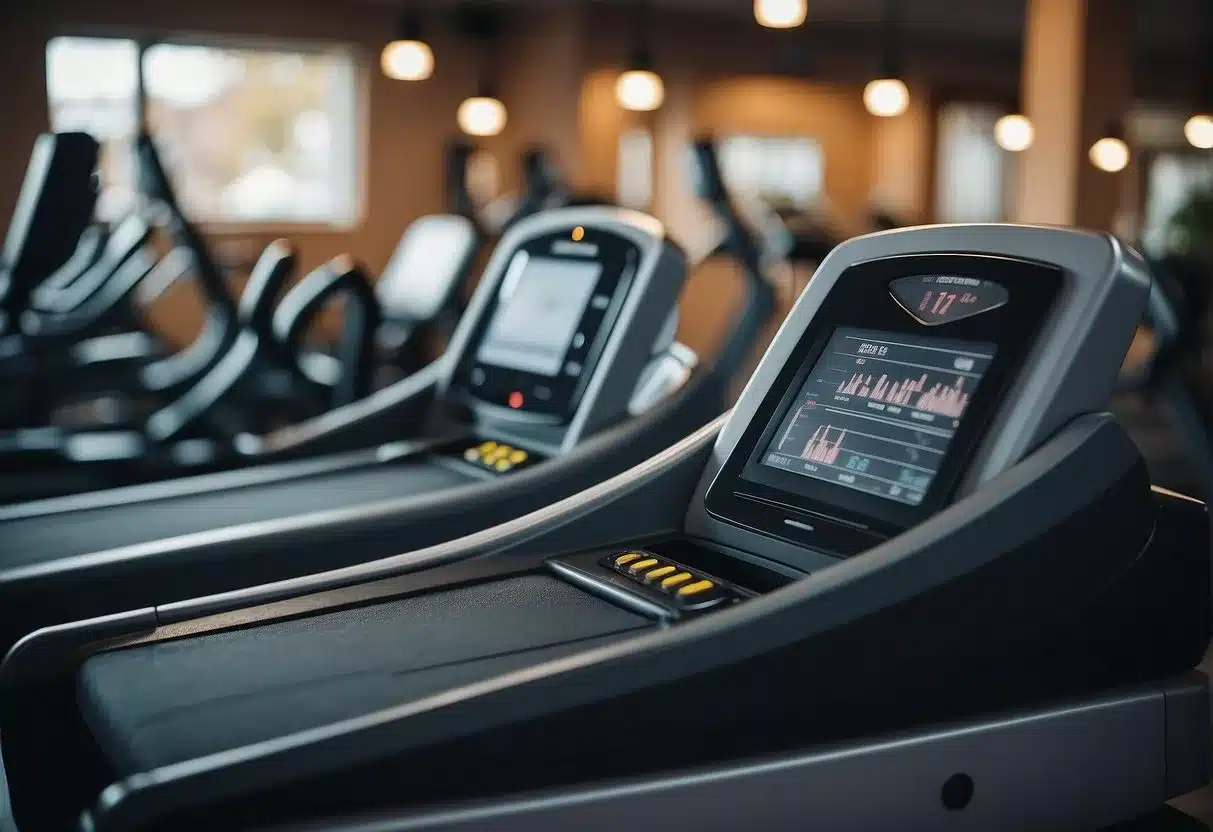
When considering treadmill walking for weight loss, understanding the specifics of speed, duration, inclines, and their effects on fat loss is crucial for effective results.
What is the optimal treadmill walking speed for fat loss?
A walking speed of 3.5 to 4 mph on a treadmill is generally recommended for fat loss, as it helps maintain an elevated heart rate to maximize calorie burn.
How many minutes per day of treadmill walking are recommended for weight loss?
Experts suggest starting with a 30-minute session each day and increasing the duration over time to enhance the weight loss effect.
What are the benefits of walking on a treadmill at an incline for weight loss?
Walking on a treadmill at an incline increases the intensity of the workout, leading to higher calorie burn and muscle engagement, beneficial for fat loss.
Can consistent walking on a treadmill reduce belly fat, and how long does it take?
While individual results vary, consistent walking on a treadmill can lead to fat loss, including reduced belly fat, over time as part of a regular exercise and a balanced diet regimen.
Is there an advantage to walking on a treadmill over outdoor walking for weight loss purposes?
Treadmill walking allows for precise control of speed and incline, potentially providing a more consistent workout compared to the varying terrain and conditions of outdoor walking.
How does the duration of daily treadmill walks correlate with the number of steps and weight loss goals?
Longer treadmill walking sessions result in more steps taken. This can contribute to achieving a higher calorie deficit. Achieving a calorie deficit is important for setting and reaching weight loss goals.